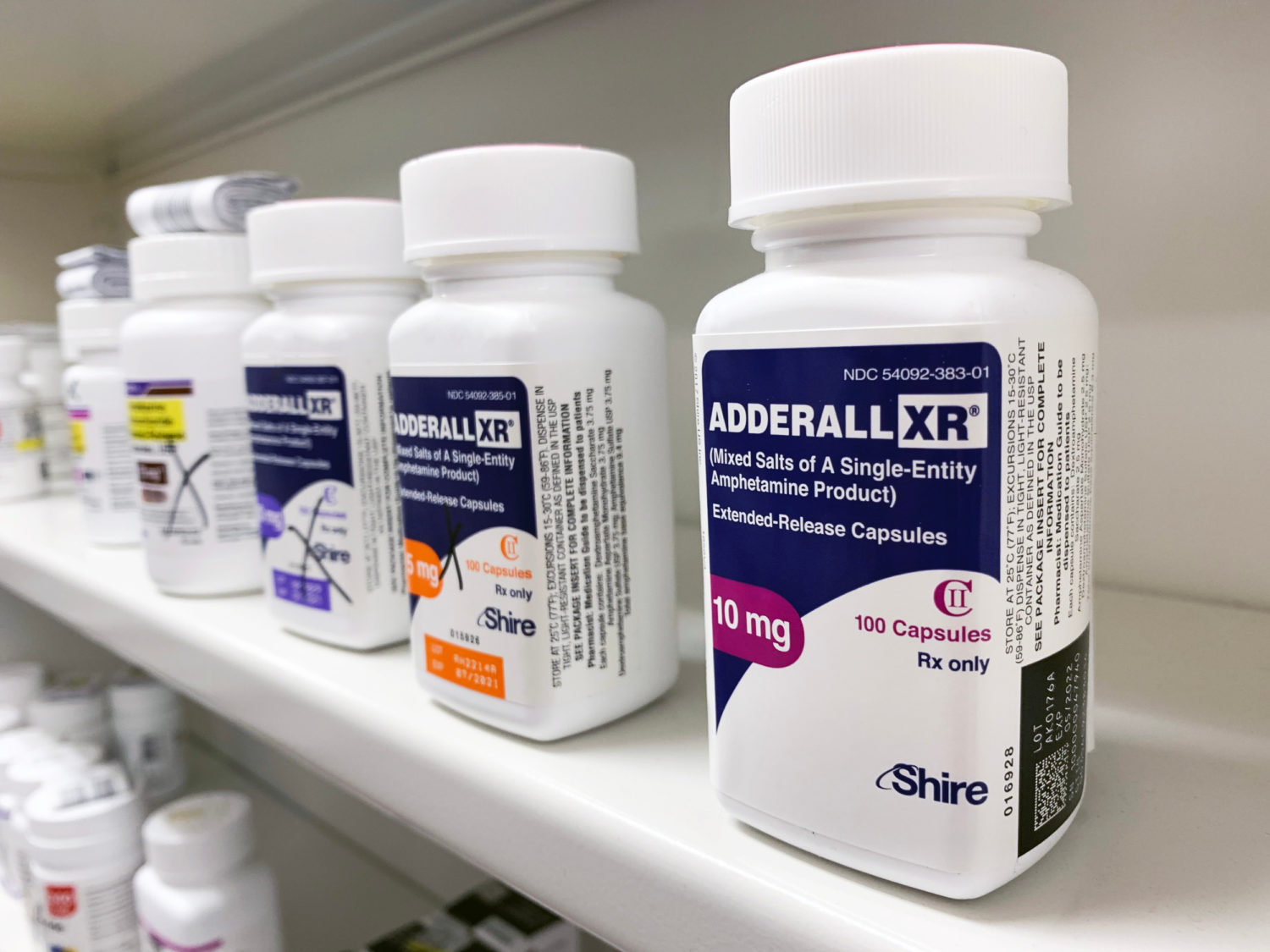
The Morning Meeting with Al Tompkins is a daily Poynter briefing of story ideas worth considering and other timely context for journalists, written by senior faculty Al Tompkins. Sign up here to have it delivered to your inbox every weekday morning.
A drug used to treat ADHD, Adderall, is in such short supply that the FDA has placed the medication on its alert list. The FDA says there are manufacturing issues, but The New York Times says a surging demand for the drug is contributing to the shortage.
Adderall, which contains the stimulant amphetamine, is a controlled substance and highly regulated, so it is difficult for pharmacies to quickly pivot and carry new brands, analysts said. Further muddying the picture is the recent popularity of telehealth services. A crop of telehealth start-up companies flourished during the pandemic, with some prescribing Adderall and other drugs to patients in unknown quantities.
The number of Adderall and generic-equivalent prescriptions has been rising in recent years, according to figures from IQVIA, a data analytics company. Total prescriptions rose by about 16 percent, to 41.2 million last year from 35.5 million in 2019.
Over the years, concerns have been raised about the overprescribing of Adderall for children and young adults with A.D.H.D., and about its abuse as a study aid among college students. The teenage mental health crisis that exploded during the pandemic put a spotlight on sharp increases in some prescriptions, like Adderall.
Wired reports that this is a deeply concerning problem that could cost lives:
For many people who take this medication, the announcement just stated what they’ve known for months. Right now, it can be tricky, wildly inconvenient, and sometimes outright impossible to get hold of this drug, commonly referred to by its brand name Adderall. Pharmacies across the country do not have it in stock. People are rationing pills, driving for hours, and pleading with their doctors for alternative treatments.
Drug shortages are not uncommon; there are over 200 happening right now in the United States alone. But this one requires special attention. The Adderall shortage may worsen the American overdose crisis. People could die.
How difficult is this shortage for patients? Insider included a first-person report by Sam Escobar who writes, “I called over 40 pharmacies this month trying to find it, which was incredibly exhausting. I still ended up going a few days without it and paying more than I usually do for my prescription.”
There is no end in sight for this problem. Fierce Pharma, a leading trade publication for the pharma industry, reports that several companies said they are running short of Adderall and/or generic drugs.
Camber Pharmaceuticals and Sun Pharma are the latest to report supply problems, according to the University of Utah Pharmacy Services website, which tracks drug shortages throughout the U.S.
In addition, the nation’s second-largest supplier of Adderall, Novartis’ generics unit Sandoz, is having increased difficulty with its supply. After reporting a shortage of extended-release Adderall in late August, Sandoz is now running low on the immediate-release version of the drug.
While the most recent nationwide shortage began two months ago, inadequate supply of Adderall has been an ongoing problem since 2019, with nine providers of the drug in the U.S. often struggling to meet surging demand. At present, seven of those suppliers are reporting shortages.
In early August, Teva told Bloomberg that a labor shortage on the company’s packaging line had triggered difficulty supplying 20-mg and 30-mg Adderall tablets. The company quickly resolved that issue but playing catch up took time, the company said.
Fierce Pharma did not offer a timeline for when the supply chains would be repaired. Adderall is a Schedule 2 narcotic, which means the FDA limits how much of the drug a manufacturer may produce. That complicates efforts to replenish short supplies.
Why are colleges paying fired coaches millions of dollars?
Here is an example of a local broadcast group that built a story with national implications.
Gray Broadcasting’s InvestigateTV recently aired a probe into the millions of dollars that public universities are paying fired coaches.
Since the fall of 2004, Division I public universities have paid out more than $1.1 billion – or $1.3 billion in today’s dollars due to inflation – to hundreds of coaches in every sport who were let go, largely, because their teams did not win enough.
Public universities are on the hook this year for more than $1 billion in severance payments if all of their coaches (are) let go, according to an InvestigateTV analysis of more than 100 head football coaches’ contracts.
The majority of those coaches are likely not to be dismissed by their schools. But some will, as happens every year.
InvestigateTV built a detailed chart showing coaches’ contracts at schools big and small. The chart is based on data from “the Knight-Newhouse College Athletics Database at Syracuse University for the 235 public universities that play Division I athletics. The data comes from financial data reported to the NCAA annually and collected by Syracuse.”
And school athletics are not always self-sustaining. InvestigateTV reported:
• That students through mandatory fees have paid more than $16.8 billion dollars – or $20.6 billion when adjusted for inflation – to their athletic departments. Of the 113 public FBS (Football Bowl Subdivision) schools, only 17 – eight of which are members of the Big 10 — have never taken student fees for athletics.
• That the universities have contributed more than $17.8 billion – or $21.6 billion in today’s dollars – to athletic department budgets. Only six universities have not kicked money into athletic departments: Georgia, LSU, Nebraska, North Carolina, Oklahoma, Penn State.
• That only three schools have never subsidized (their) athletic department budgets with student fees and university subsidies: LSU, Nebraska and Penn State.
• That among the FBS schools, only seven have never made a severance payment to a football coach — Arkansas State, Boise State, Northern Illinois, Ohio University, Oklahoma State, South Alabama, and Toledo. Arkansas State and Boise State are the only two FBS schools that haven’t ever bought out a coach in any sport.
The largest buyouts belong to the blue bloods of big-time athletics. They have a history – and an expectation – to win a lot.
But some also are quick to move to the next coach when losses mount.
Since 2004, the five largest total severance payments paid out for coaches in all sports belong to the following universities:
• Auburn: $48 million (actual), $56.6 million inflation-adjusted
• Tennessee: $42.5 million (actual), $51.6 million inflation-adjusted
• Nebraska: $39.8 million (actual), $47.2 million inflation-adjusted
• Kansas $34.9 million (actual), $41.2 million inflation-adjusted
• Texas: $32.8 million (actual), $37.1 million inflation-adjusted
I saw something in the credits that seems worth mentioning.
Research and data collection contributors are InvestigateTV associate producers Conner Hendricks, Payton Romans and Jalen Wade, and students from the Arnolt Center for Investigative Journalism at Indiana University.
You really should browse the work these students are doing. This student/professional partnership model is becoming more common and important.
Working on crossword puzzles may be good for your brain
A new study published in the New England Journal of Medicine Evidence says that working on a crossword puzzle may be beneficial to stave off the loss of brain functions in seniors. The study found that solving crossword puzzles seems to be more effective in stimulating brain functions than computerized games, even computerized crossword puzzles.
But the study does not say why that might be true. Newspapers may be tempted to trumpet these results as being a reason that getting a printed newspaper has benefits beyond the stories and coupons. Just don’t oversell the study. The study included about 100 people. It was funded by the National Institutes of Health.
Researchers also looked at a range of other brain-stimulating activities:
A systematic review of 22 population-based studies estimated that complex mental activities, such as reading books, playing checkers, and completing crosswords or other puzzles, reduced overall incident dementia risk by 46% during a median 7-year period.
The bottom line, keeping your mind active as you age may benefit your brain. I am fairly sure, though have no clinical evidence, that reading this column is also good for the brain as, I am also sure, that sometimes it is a puzzle to figure out what the heck I am talking about.









